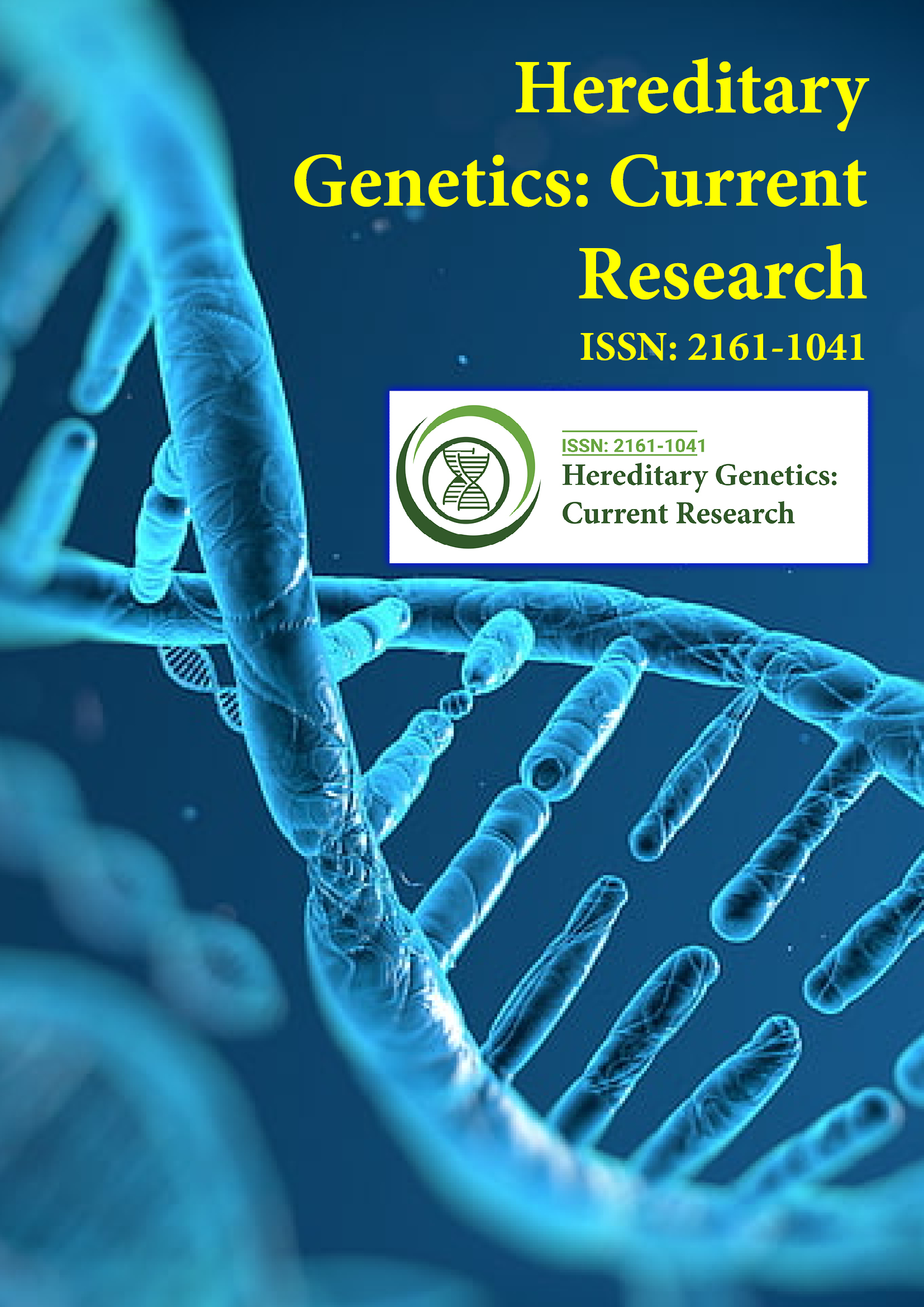Indexed In
- Open J Gate
- Genamics JournalSeek
- CiteFactor
- RefSeek
- Hamdard University
- EBSCO A-Z
- NSD - Norwegian Centre for Research Data
- OCLC- WorldCat
- Publons
- Geneva Foundation for Medical Education and Research
- Euro Pub
- Google Scholar
Useful Links
Share This Page
Journal Flyer

Open Access Journals
- Agri and Aquaculture
- Biochemistry
- Bioinformatics & Systems Biology
- Business & Management
- Chemistry
- Clinical Sciences
- Engineering
- Food & Nutrition
- General Science
- Genetics & Molecular Biology
- Immunology & Microbiology
- Medical Sciences
- Neuroscience & Psychology
- Nursing & Health Care
- Pharmaceutical Sciences
Opinion Article - (2024) Volume 13, Issue 4
Pediatric Hereditary Neuropathies: The Impact of Emerging Genetics
Michael Dubois*Received: 29-Nov-2024, Manuscript No. HGCR-24-28207; Editor assigned: 02-Dec-2024, Pre QC No. HGCR-24-28207 (PQ); Reviewed: 16-Dec-2024, QC No. HGCR-24-28207; Revised: 23-Dec-2024, Manuscript No. HGCR-24-28207 (R); Published: 30-Dec-2024, DOI: 10.35248/2161-1041.24.13.296
Description
Hereditary neuropathies in children represent a various group of disorders affecting peripheral nerves, characterized by muscle weakness, sensory loss and diminished reflexes. Traditionally associated with conditions like Charcot-Marie-Tooth (CMT) disease, the understanding of these neuropathies has expanded dramatically with the advent of advanced genetic technologies. These advances have highlighted previously unknown genetic contributions, reforming diagnostic strategies and therapeutic approaches in pediatric hereditary neuropathies.
Charcot-Marie-Tooth disease, the most prevalent hereditary neuropathy, is an umbrella term for a spectrum of genetically heterogeneous disorders. It has been historically classified into demyelinating (CMT1) and axonal (CMT2) subtypes, with intermediate forms identified more recently. Mutations in genes such as PMP22, MPZ, GJB1 and MFN2 are well-documented contributors. However, Next-Generation Sequencing (NGS) technologies have revealed an ever-growing list of genes implicated in neuropathies, many of which were previously unrecognized.
The use of Whole-Exome Sequencing (WES) and Whole- Genome Sequencing (WGS) has led to the identification of novel genetic mutations in less common neuropathies and syndromic forms. For example, mutations in SH3TC2, GDAP1 and KIF1B have been implicated in autosomal recessive forms of CMT, while variants in DNM2, NEFL and HSPB1 have been linked to dominant patterns of inheritance. These discoveries highlight the genetic complexity of hereditary neuropathies, highlighting the need for customized diagnostic approaches in children.
In addition to increasing the genetic spectrum, emerging technologies have revealed critical insights into the fundamental pathophysiology of hereditary neuropathies. For example, studies on the PMP22 duplication associated with CMT1A have clarified mechanisms of abnormal myelin production and Schwann cell dysfunction. Similarly, research on MFN2, responsible for many cases of CMT2A, has provided valuable information on mitochondrial dynamics and axonal transport, central to the pathogenesis of axonal neuropathies. Collaborative efforts by global institutions such as the Karolinska Institute and Kyoto University have been significant in advancing our understanding of these pathways.
Early and accurate diagnosis of hereditary neuropathies is essential for optimizing patient outcomes. Genetic testing has become the foundation of diagnosis, providing precision and the potential to uncover rare or novel mutations. Combining clinical evaluation with molecular diagnostics, including targeted gene panels, WES and WGS, has increased diagnostic yield significantly. Institutions like Harvard Medical School and the Mayo Clinic emphasize the combination of genetic findings into clinical care, facilitating personalized treatment plans and family counseling.
Genetic discoveries have also brought clarity to the overlap between hereditary neuropathies and other neurological conditions. For example, mutations in GLRA1 and GLRB, traditionally associated with hereditary hyperekplexia, have been implicated in syndromic neuropathies. Similarly, the identification of SETX and POLG mutations has revealed links between neuropathies and neurodegenerative disorders such as amyotrophic lateral sclerosis and mitochondrial encephalopathy, respectively. These findings highlight the importance of considering major phenotypic presentations in genetic evaluations.
Advances in genetic research have translated into innovative therapeutic strategies for hereditary neuropathies in children. Gene therapy, small molecule treatments and Antisense Oligonucleotides (ASOs) are being actively described for their potential to correct or modulate disease-causing mutations. For example, preclinical studies on ASOs targeting PMP22 duplication have shown potential in minimizing disease progression in CMT1A models. Similarly, small molecules designed to stabilize misfolded proteins in MPZ and MFN2 mutations are under investigation. Researchers at the Broad Institute and Swiss Federal Institute of Technology are at the forefront of these developments, working to bring these therapies closer to clinical application.
In conclusion, the contribution of new genetic discoveries to understanding hereditary neuropathies in children has been transformative, providing innovative insights into their molecular basis and clinical management. Advances in diagnostic technologies and therapeutic development hold potential for improving outcomes for affected children and their families. Continued collaboration among global research institutions is essential to address remaining challenges and ensure the translation of genetic advances into meaningful clinical applications.
Citation: Dubois M (2024). Pediatric Hereditary Neuropathies: The Impact of Emerging Genetics. Hereditary Genet. 13:296.
Copyright: © 2024 Dubois M. This is an open access article distributed under the terms of the Creative Commons Attribution License, which permits unrestricted use, distribution, and reproduction in any medium, provided the original author and source are credited.

